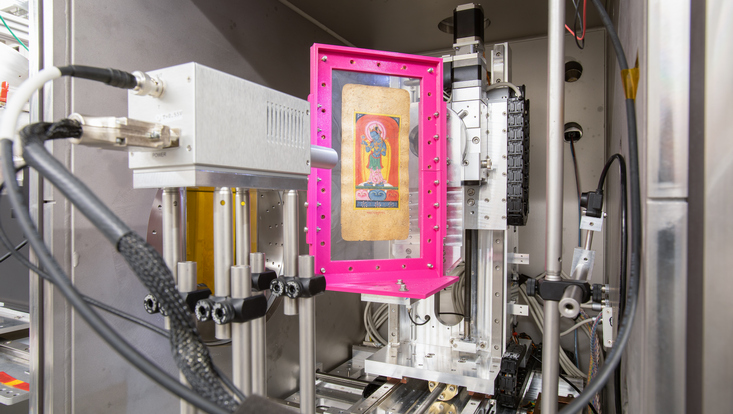SMC 45A Complete History of 65 tsakali Cards
26 November 2025

Photo: De Gruyter
The latest volume of the ‘Studies in Manuscript Cultures’ book series aims to provide the complete history of Tibetan tsakali cards, unique ritual artefacts that remain little known outside specialist circles.
They are not just written artefacts, but objects of art. They immediately strike the eye of the beholder due to their colourful, sophisticated illuminations. And they have been integral to the spiritual landscape of both the Bon and Tibetan Buddhist traditions. At first glance, tsakali cards have everything that makes cultural heritage objects fascinating not only for researchers, but anyone interested in the cultures and religions of the Himalayas.
Yet, these ritual cards remain largely unknown outside specialist circles. The main reason for their obscurity is that their meaning and function are difficult to grasp when examined in isolation. Traditionally crafted by spiritual masters for their disciples, tsakali typically display sacred imagery on one side and religious texts on the other, and were largely used in meditation and initiation ceremonies. The highly specific and private circumstances of their use are difficult to reconstruct Therefore, crucial questions about their nature often remain unanswered: to which tradition do they belong? Where and when were they produced? What can they tell us about the spiritual teacher who owned them?
In the latest volume of the Studies in Manuscript Cultures (SMC) book series, editor Agnieszka-Helman Wazny has teamed up with a dozen CSMC colleagues to unravel the secrets of a set of 65 such tsakali cards, which belong to the Zhangzhung Nyengyü culture and survived the mass destruction of the Chinese Cultural Revolution. Their goal is nothing less than to tell the ‘complete history’ of these cards, with contributions from Tibetology, art history, paper history and science, archaeometry, computer science, and natural sciences.

The researchers involved have applied a significant proportion of all analytical methods used at the CSMC to examine written artefacts to the objects, including multispectral analysis, small- and wide-angle X-ray scattering, FTIR spectroscopy and machine learning approaches. The result is not only an in-depth exploration that enables a multidimensional understanding of the objects selected here, but also an impressive example of how many facets of written artefacts can be revealed when we approach them with a broad arsenal of expertise and methods.
The structure of the new volume mirrors the breadth of its inquiry. The opening chapters set the historical and spiritual stage, providing background on the Zhangzhung Nyengyü lineage and the religious figures represented on the cards. Subsequent chapters are each devoted to a different analytical method, revealing new details about the materials, iconography, and history of the collection—ranging from the plant fibres used in the paper to the vibrant pigments and evidence of age and restoration. The volume closes with an epilogue that draws together these diverse findings, alongside a comprehensive handlist featuring high-quality images of each card, as well as transcriptions, translations, and technical notes.
The Zhangzhung Nyengyü ‘Tsakalis’: A Cross-Disciplinary Analysis is the 45th volume in the SMC book series. Like almost all previous volumes of SMC, it is available open access and can be downloaded from the publisher’s website.


